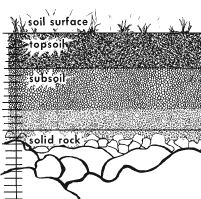top of page
Assignment 1.1.3
Adaptive
Fire adapted ecosystem
Adaptiveness is often related to the process of natural selection where behaviors or growth patterns of living organisms alter in order to prolong their reproductive cycles.


野火烧不尽,春风吹又生。
Fire acts as a source that creates a lot of entropy. Yet in many ecosystems, such as savanna, coniferous forests, fire is an essential contributer of biodiversity, where the plants not only learned to withstand the wildfire, but even use it to their advantage.

Three different levels of fire:
- Ground fire: burns through the soil that is rich in organic matters.
- Surface Fire: burns through dead plant material lying on the ground
- Crown fire: burns through the tops of shrubs and trees.
Fire occurs most often in dry seasons, especially when lightning is most prevalent. One can measure the specific occurances of wildfire in a specific area.
Soil
Fire may cause change in nutrients through a variety of processes like oxidation, volatization, erosion and leaching by water. However, usually only high temperature would destroy the nutrient system within the soil.
Quantity of nutrients usually increase due to the ash generated after the fire. This is like a fast stimulation of available nutrients compared to the slow process of decomposition. rock may also go through faster weathering process and release nutrients to the soil
After removing vegetations after the fire could cause
- higher temperature of the soil during day due to more exposure to solar radiation and greater cooling due to loss of heat at night. Fewer leaves would intercept the rain which could contribute to the higher moisture in the soil.



An example of such ecosystem would be in chaparral community of southern California where plants' leaves are coated in flammable oil that encourage the fire to happen.
The heat of the fire would be a channel for them to germinate. Similar examples include smoke activated seeds,or fire activated buds.
Lodgepole Pine
They are sealed with a resin that fire melts away and thus releasing the seeds.
Other canopies such as shade intolerant giant sequoia require fire to create empty space for their seeds to compete with more shade tolerant plants.


The phenomenon of fire that are commonly perceived as a form of natural disaster, is able to disassociate living matters to allow the reproductive process to take place. Living organisms adapt to wildfire and utilize it as a tool for regeneration. In some ways, it acts as a motivator for periodic ecosystem renewal.
bottom of page


